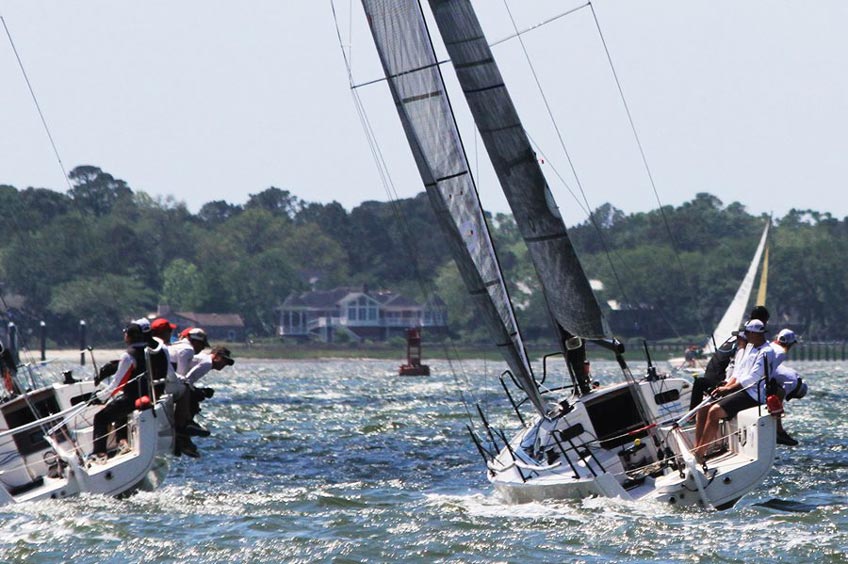Racing in puffy conditions can be a significant challenge if you’re not prepared to respond to the variable breeze. Quantum's Jason Currie gives his tips for creating opportunities to use puffs to your advantage.

Being prepared for and responding to puffs efficiently will give you the edge on the racecourse. In light air, finding and taking advantage of puffs can create massive gains both up and downwind. In heavy breeze with increasing gusts, keeping a consistent angle of heel and full control of the helm and sails prevents loss of headway and fleet position. If the crew works together to respond to the puffs, their race is bound to be a success.
Tune the Rig
The correct tune for the conditions is essential for maximizing performance. Consult your boat’s tuning guide and adjust accordingly for the wind ranges you’re experiencing. If the rig tune is too loose for even the base wind speed, the sails will be too full to benefit from any puffs.
Backstay Tension
In the puffs, the backstay (or runner tension) should be wound on to tighten the rig and flatten the sails upwind. That will help prevent excessive heeling. Once the rig is squared away, you can make adjustments that will keep the boat sailing at its best angle by easing the traveler or mainsheet while at the same time pulling the vang on tight. Together, these adjustments control mainsail leech tension and twist.
Call it Out
Designate a person on the rail to call puffs throughout the race, and have them count down, “3, 2, 1, breeze on.” Upwind, the helmsperson and mainsail trimmer can anticipate the puff to maintain a consistent heel angle. Downwind, when a puff hits the helm it loads up the sail and the boat accelerates. The helm must respond. In light air, big gains can be made by looking behind for puffs while sailing away from the wind. If you see a puff behind sliding to leeward of the boat, consider jibing to take advantage of the pressure.
Stay in Control
If you’re sailing downwind, overloading the helm can cause a broach. With the information provided from the rail, the driver and trimmer must communicate so the spinnaker sheet can be eased in the puff to unload the rudder and enable the helmsperson to turn down.
All Together
Crew hiking is challenging and vital in puffs. If the boat heels over in a puff, it reduces the flow over the keel and rudder and the boat slips sideways. Hiking hard and working on a consistent heel angle is crucial for taking advantage of the puff.
Eyes on the Road
When the puff hits, the driver should work on feathering the boat through the puffs. That means you could be sailing “inside” the jib with a slight bubble in the luff. That will maintain the heel angle to prevent too much heel.
Sailing in puffs requires additional concentration from all crew, both on and off the boat. By anticipating when a puff will hit and the effect it will have on the sails, keel, and heel angle, the trimmer and helm have ample opportunity to respond accordingly. The next gusty day you’re on the water, bring all of these elements together to help you and your crew not only tackle, but also leverage puffs on the course.